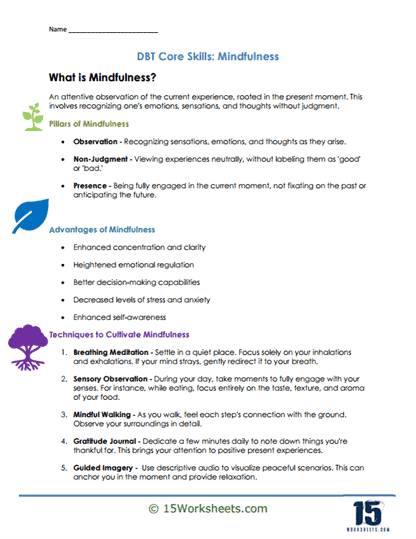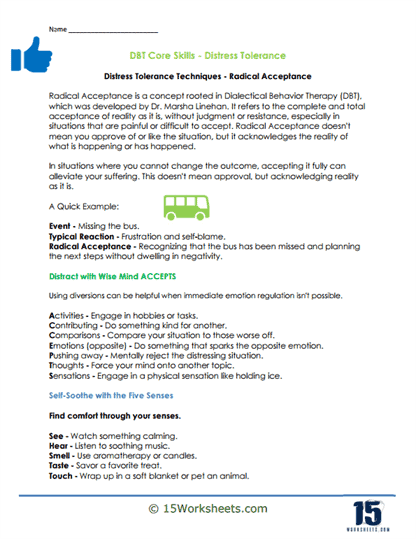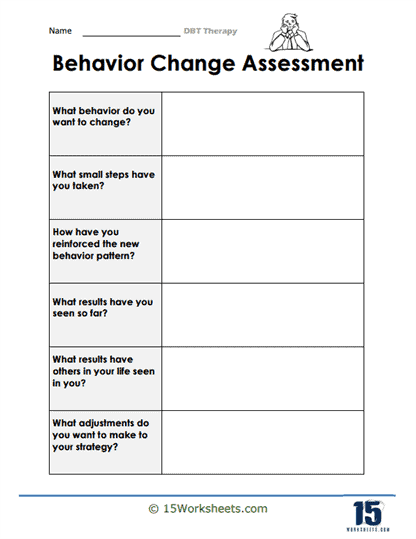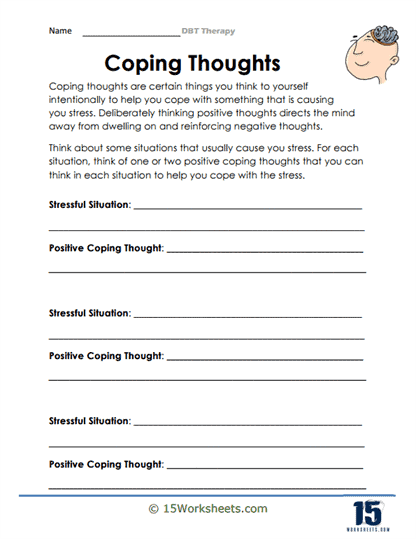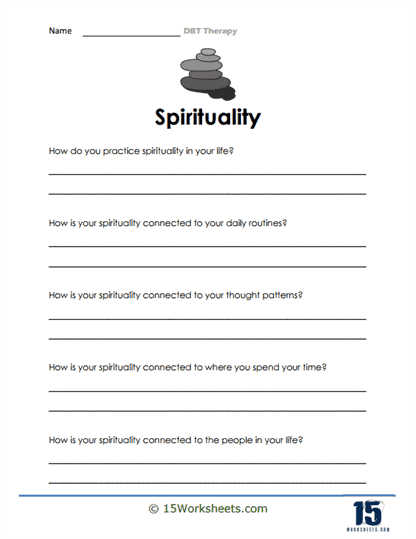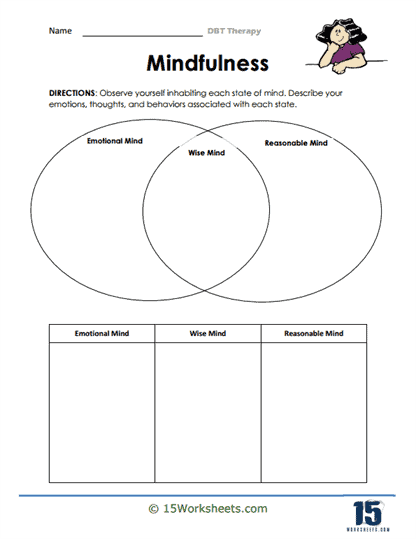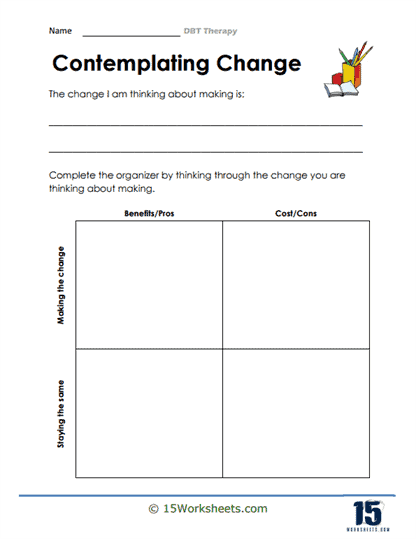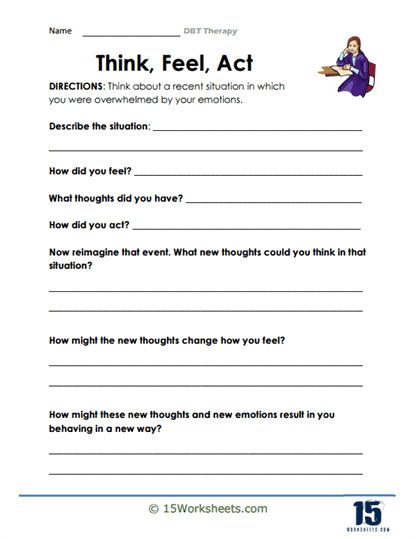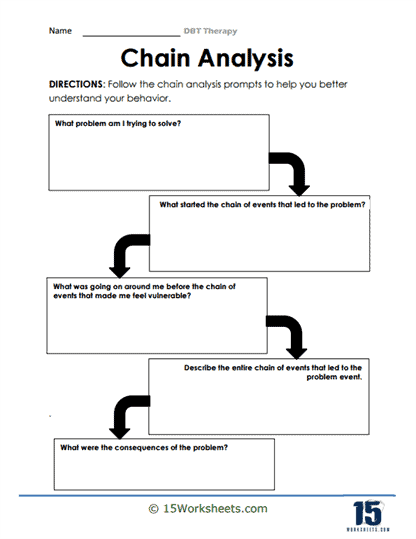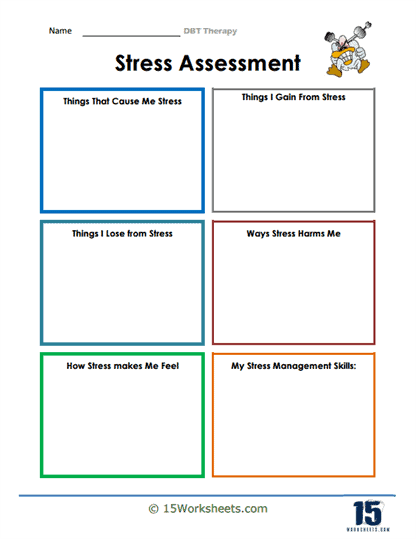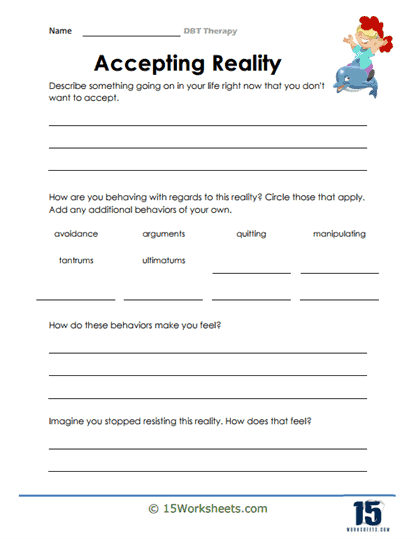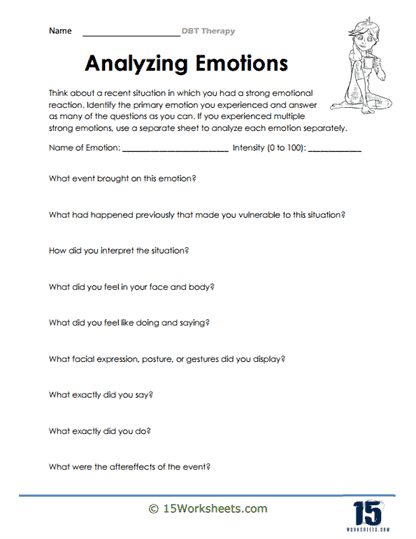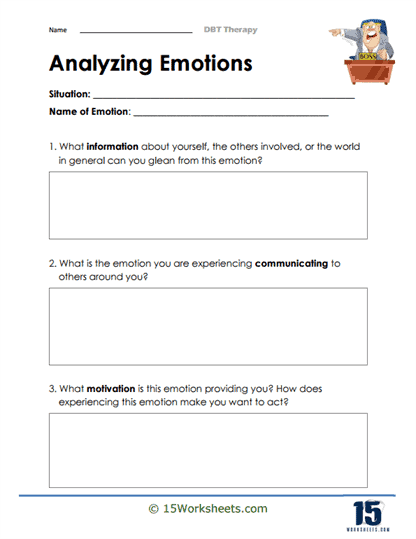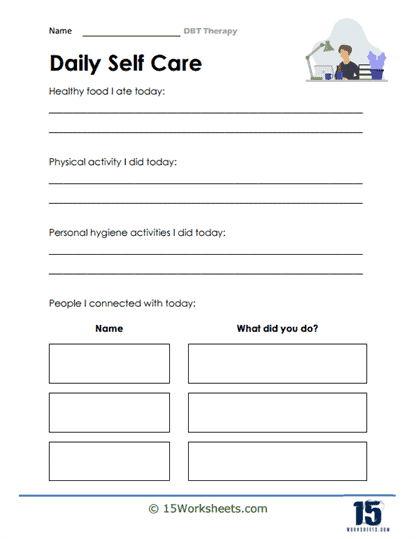DBT Therapy Worksheets
All About These Worksheets
Dialectical Behavior Therapy (DBT) is a transformative approach in the world of mental health, specifically designed to guide individuals through emotional challenges and foster resilience. At the core of DBT lies its structured, skill-based framework, aimed at improving emotional regulation, interpersonal relationships, mindfulness, and distress tolerance. However, one of the most essential and practical tools in this therapy are DBT worksheets, which serve as both a roadmap and a hands-on guide to ensure that the skills learned in therapy translate into real-life scenarios. These worksheets are more than just paper exercises; they are vital instruments that help individuals internalize the teachings of DBT, one step at a time.
Developed by Dr. Marsha Linehan in the late 1980s, DBT was originally intended to support individuals with borderline personality disorder (BPD). Those struggling with BPD often face intense emotional instability, leading to difficulties in relationships, impulsive behaviors, and self-destructive patterns. Dr. Linehan’s innovation was to combine cognitive-behavioral techniques with concepts from mindfulness and acceptance practices, helping patients to navigate emotional turbulence more effectively. Over the years, DBT has been found to be incredibly versatile, extending its benefits to people dealing with a range of mental health issues including depression, anxiety, eating disorders, and even PTSD. But what makes DBT unique is its actionable focus, with worksheets playing a pivotal role in bringing theory into practice.
DBT worksheets are designed to break down complex emotional challenges into manageable exercises. They give individuals the opportunity to engage in structured activities that directly target their areas of struggle, whether it’s emotional regulation, interpersonal difficulties, or the overwhelming sensation of distress. For example, when working on mindfulness—one of the core pillars of DBT-worksheets might include guided reflection exercises that encourage patients to stay present in the moment, focusing on sensations, thoughts, and feelings without judgment. This allows individuals to practice mindfulness not only in therapy sessions but in everyday life, reinforcing their ability to stay centered during moments of emotional upheaval.
In addition to mindfulness, another significant aspect of DBT is emotional regulation. Many people undergoing DBT struggle with intense emotional reactions, often feeling as if their emotions are controlling them rather than the other way around. DBT worksheets provide a concrete method to address these feelings. Through structured exercises, individuals learn how to identify and label their emotions, understand their triggers, and develop strategies to manage their responses. This type of practice allows for a deeper understanding of one’s emotional landscape and helps build a sense of control, reducing the power of those overwhelming emotional storms.
Interpersonal effectiveness, another key component of DBT, addresses the difficulties individuals may face in maintaining healthy and stable relationships. People with emotional regulation challenges often find themselves in conflict or struggle with assertiveness, which can strain both personal and professional relationships. DBT worksheets provide specific exercises to practice skills such as active listening, setting boundaries, and negotiating needs. By engaging with these exercises, individuals gain tools that enable them to communicate more effectively and build stronger, more fulfilling relationships.
Distress tolerance is perhaps one of the most immediate skills addressed by DBT worksheets. This area of focus is all about surviving crisis moments without making things worse. Many individuals undergoing DBT may have a tendency to engage in harmful or impulsive behaviors during moments of extreme distress, such as self-harm or substance abuse. The distress tolerance worksheets offer strategies to cope with these moments through distraction techniques, self-soothing activities, or accepting reality as it is without trying to change it immediately. These exercises can be life-saving, providing a way to navigate through periods of intense emotional pain without resorting to destructive actions.
One of the strengths of DBT is how it integrates these skills-mindfulness, emotional regulation, interpersonal effectiveness, and distress tolerance-into a cohesive whole. Rather than focusing on just one aspect of emotional well-being, DBT offers a comprehensive approach. The worksheets mirror this holistic nature, often requiring individuals to reflect on how these different areas interact in their own lives. For instance, a worksheet might prompt someone to explore how emotional dysregulation impacts their relationships or how a lack of mindfulness contributes to their distress. This integrative approach helps individuals see the bigger picture, making them more equipped to handle the complexities of their mental health.
A Look At Individual DBT Therapy Worksheets
We start with Mindfulness, which is less about becoming a serene monk and more about not losing your mind during a Tuesday afternoon traffic jam. Students learn to pause, breathe, and maybe not text their ex just because Mercury is in retrograde. Next up: Distress Tolerance, the worksheet equivalent of holding it together when life hands you a melting ice cream cone and a surprise dentist bill. These exercises help you manage emotional earthquakes with less flailing and more grounding techniques that don’t require Wi-Fi.
Then things get practical-and mildly uncomfortable-with Behavior Change Assessment and Emotional Action Plan. This is where students start interrogating their own habits like a detective on a self-awareness crime show. Why do I eat three sleeves of cookies after every awkward conversation? Is that an emotional action plan or a dessert emergency? These worksheets ask the hard questions. With Mastering Stress Triggers, we go spelunking into the hidden caves of our reactions. It’s a treasure hunt for the “why” behind the “WHY AM I YELLING,” and spoiler alert: it often starts with skipped lunch and unresolved childhood tension.
Positive Coping Thoughts swoops in like a therapy superhero with a cape made of sticky notes. Instead of screaming internally, students are encouraged to reframe their inner dialogue from “I can’t do this” to “I’ve survived worse…like group projects.” Exploring Spirituality takes a gentle detour into the meaning of life, whether that’s through prayer, nature walks, or just deeply bonding with your houseplant. And then, the iconic DBT triad hits: Emotional, Wise, Reasonable. It’s like an inner board meeting where the Drama Queen, the Robot, and the Zen Master all have to agree on your next move. Spoiler: it’s rarely ordering a llama online out of impulse.
The heavy hitters keep coming with Pros and Cons of Changes and Think, Feel, Act, which read like the therapy version of choose-your-own-adventure books-except the stakes are your emotional wellbeing and not whether you get eaten by a swamp monster. These worksheets help students realize that feelings influence thoughts, which influence actions, which often lead to texts you regret and Amazon boxes you don’t remember ordering. Chain Analysis is next, a fan favorite among emotional archaeologists. It’s a forensic dive into that one time you spiraled, and why it started with a stubbed toe and ended in existential dread.
In the Stress Assessment, students take inventory of all the ways life stresses them out-work, school, traffic, people who chew loudly-and assign numbers to the chaos. Think of it as Yelp for your nervous system. Accepting Reality comes in not as a buzzkill, but as the voice of calm reason saying, “Yes, this sucks. No, you can’t teleport out of it. But you can learn to live with it without lighting a metaphorical fire.” Analyzing Emotions and A Deeper Insight push students to stop ghosting their feelings and actually invite them in for coffee-awkward, but ultimately healing.
The series wraps with some surprisingly wholesome vibes: Daily Self Care, which reminds students that hydration and naps are not optional, and Personal Goal Setting, where all this introspection gets a direction. It’s not just about surviving your emotional rollercoaster; it’s about building the track to ride it without flying off the rails. Together, these worksheets form a toolkit for emotional growth, stress survival, and the occasional epiphany while brushing your teeth.

